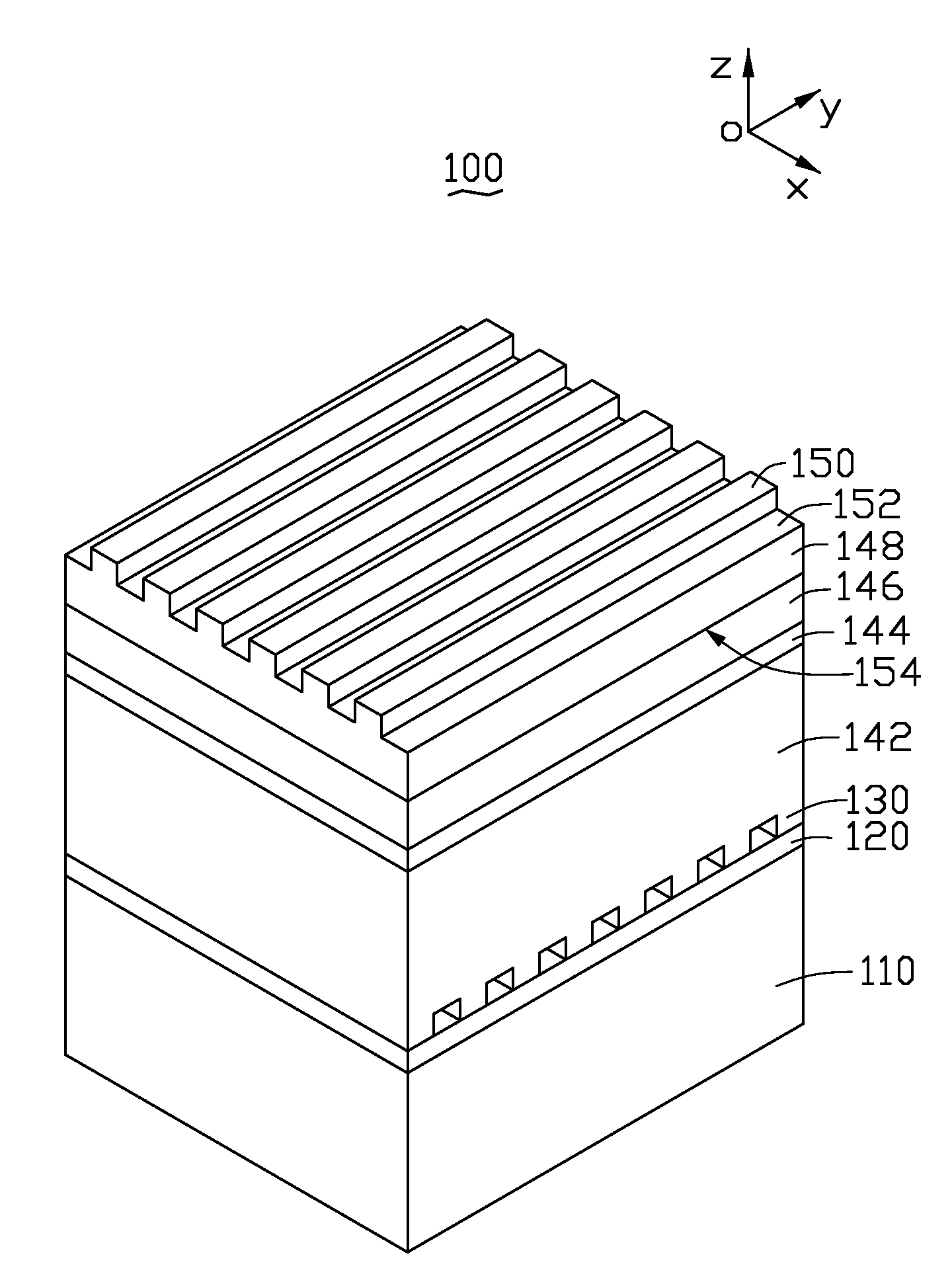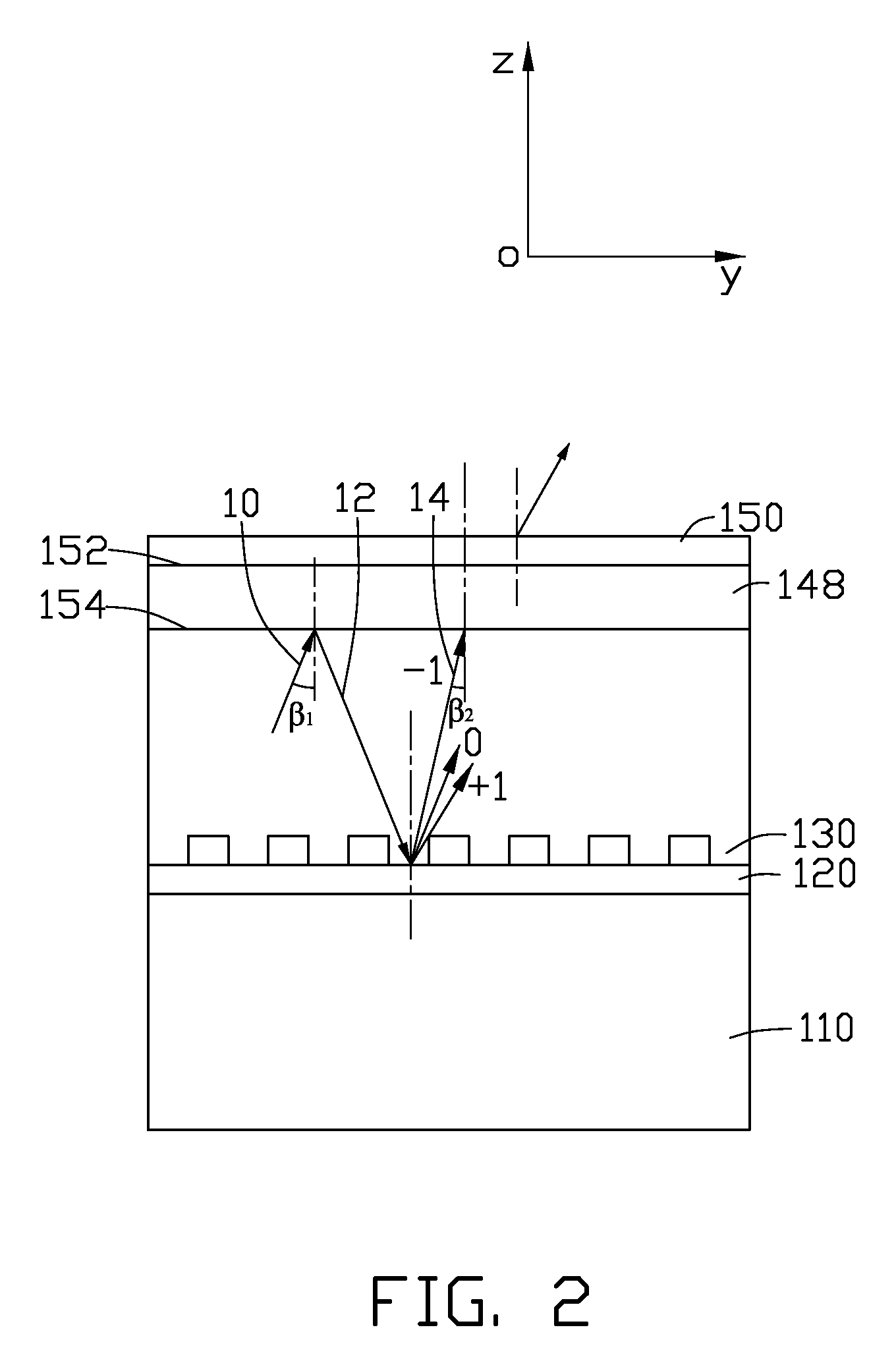Light-emitting diode
a diode and light-emitting technology, applied in the direction of basic electric elements, semiconductor devices, electrical equipment, etc., can solve the problems of low brightness, low extraction efficiency of conventional leds, and loss of most of light rays emitted within leds, and achieve high extraction efficiency
- Summary
- Abstract
- Description
- Claims
- Application Information
AI Technical Summary
Benefits of technology
Problems solved by technology
Method used
Image
Examples
first embodiment
[0017]Referring to FIG. 1, an LED 100, is shown. The LED 100 includes a substrate 110, a reflective layer 120, an N-type semiconductor layer 142, an active layer 144, a P-type semiconductor layer 146, a transparent electrode layer 148, a first diffraction grating 150 and a second diffraction grating 130. The substrate 110, the reflective layer 120, the second diffraction grating 130, the N-type semiconductor layer 142, the active layer, the P-type semiconductor layer 146, the transparent electrode and the first diffraction grating are arranged in the order, i.e., typically disposed in stack.
[0018]The reflective layer 120 is deposited on the substrate 110, or selectively, on the surface of the second diffraction grating 130. The reflective layer 120 functions as a mirror and an electrode. The transparent electrode layer 148 includes a top surface 152 and a bottom surface 154. The bottom surface 154 is connected with the P-type semiconductor layer 146, and the top surface 152 is conn...
second embodiment
[0025]Referring to FIG. 3, an LED 200 is shown. The LED 200 includes a substrate 210, a reflective layer 220, a second diffraction grating 230, an N-type semiconductor layer 242, an active layer 244, a P-type semiconductor layer 246, a transparent electrode layer 248 and a first diffraction grating 250 typically disposed in stack. The LED 200 is similar to the LED 100, except that the grooves of the first diffraction grating 250 are parallel to that of the second diffraction grating 230. The light extraction efficiency of the LED 200 is about 28.6%, higher than that of the conventional LED with only the first diffraction grating.
[0026]It is known to the one killed in the field than the LED also can include a substrate, a reflective layer, a second diffraction grating, a P-type semiconductor layer, an active layer, an N-type semiconductor layer, a transparent electrode layer and a first diffraction grating disposed in stack. Further, the substrate can be removed, and the reflective ...
PUM
 Login to View More
Login to View More Abstract
Description
Claims
Application Information
 Login to View More
Login to View More - R&D
- Intellectual Property
- Life Sciences
- Materials
- Tech Scout
- Unparalleled Data Quality
- Higher Quality Content
- 60% Fewer Hallucinations
Browse by: Latest US Patents, China's latest patents, Technical Efficacy Thesaurus, Application Domain, Technology Topic, Popular Technical Reports.
© 2025 PatSnap. All rights reserved.Legal|Privacy policy|Modern Slavery Act Transparency Statement|Sitemap|About US| Contact US: help@patsnap.com



